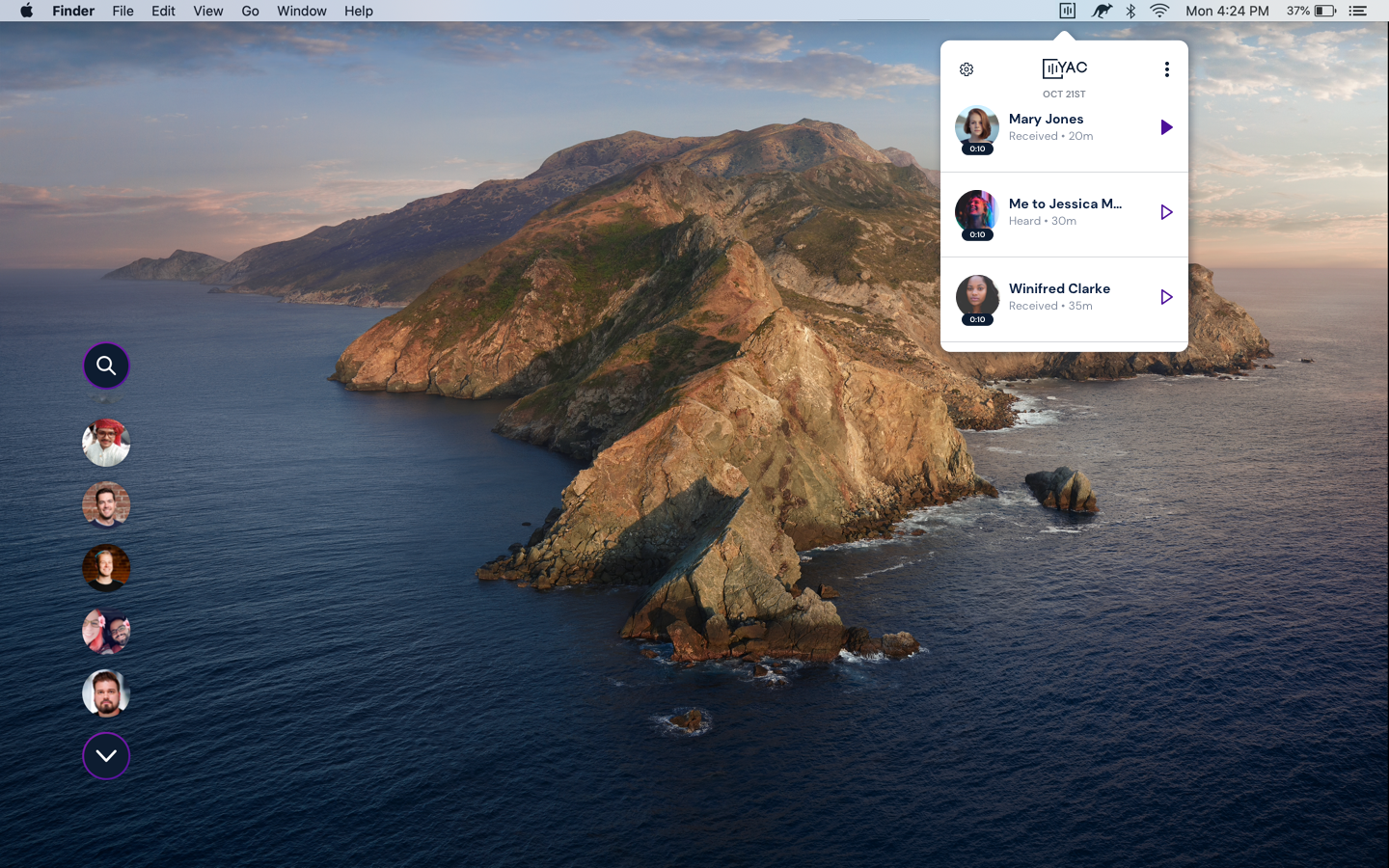With distributed workforces all the rage in the tech community these days, startups are trying to build new tools to keep those teams connected and communicating in the ways that make folks most comfortable.
One of these companies is the Orlando, Fla.-based startup, Yac, which just raised $1.5 million in financing from a clutch of investors to reinvent voicemail for teams raised on Slack and Zoom calls.
The digital, distributed workforce is a phenomenon that’s on the rise, and the increasing number of remote workers shows no sign of slacking. Indeed, new statistics indicate that 3% of Americans are working from home full time these days.
These remote workforces can reduce costs for both young and mature companies alike, but they come with certain trade-offs and can make communication and collaboration more difficult, according to Yac co-founder Justin Mitchell.
He points to the problems with communication and culture at Away, which contributed to the ouster of that company’s chief executive (who was later re-hired).
Yac addresses the issue of providing verbal feedback and communication asynchronously instead of needing to respond in real time. Email and voicemail also perform these asynchronous communication functions, but Mitchell says that they’re just not tools that respond to the needs of the modern workforce.
So far, there are 4,500 messages a month left on Yac’s service, and the company has around 250 daily active users.

A desktop view of Yac’s messaging service in action
Yac was born out of the digital design agency SoFriendly and was initially built for Product Hunt’s Maker Festival. The winning team at the event, Yac, took off as a business when the founding team got a call from Adam Draper, the third-generation venture capital investor. Draper’s Boost VC was an early backer of the company, which went on to collect additional funding from Betaworks and Active Capital.
The key, Mitchell says, is the asynchronous aspect of communication that Yac enables. As a distributed team itself, Yac and SoFriendly knew the perils and annoyances that come from the always-on, real-time communication platforms like Slack or the in-person conference call or video call via Zoom.
“We know a lot of headaches that a fully remote organization runs into,” says Mitchell. “I hope for us to be the next Zoom but for a distributed workforce.”
The company currently has six full-time employees and is using the same freemium model that made Slack so initially compelling to early-stage companies. The free version provides unlimited messaging, but there’s a cap on how long messages will remain active. For paying customers there’s no retention limit and the company provides transcription services and deeper integrations with a team’s workflows, says Mitchell. It’s all at a cost of $8 per-user and the company is launching its first paid plans this month.
“The future of meetings will be asynchronous, in your ears and hands-free,” says Pat Matthews, the chief executive and founder of Active Capital. “Just look at any city and you’ll see people are no longer working in cubicles, they’re on the move, in coffee shops and multitasking. That’s the power of building for remote-first instead of office workers.”
Mitchell says the product is good for distributed teams — whether they’re distributed across floors of a building or across cities in the U.S. or around the world.
“Using Yac is kind of like calling over to a friend while you’re working, but because it’s asynchronous you don’t have to bother them. It makes working remotely a lot easier, especially when your team is scattered around the country,” says Charlie Taylor, head of Partnerships, Bose, and an early Yac user, in a statement.
Can the same thing be done with a voicemail or an email? Mitchell acknowledges that it can, but that the experience is clunky and negative. What’s more annoying than a missed call? Getting a Yac is using a Snap-like interface to send a video message.
